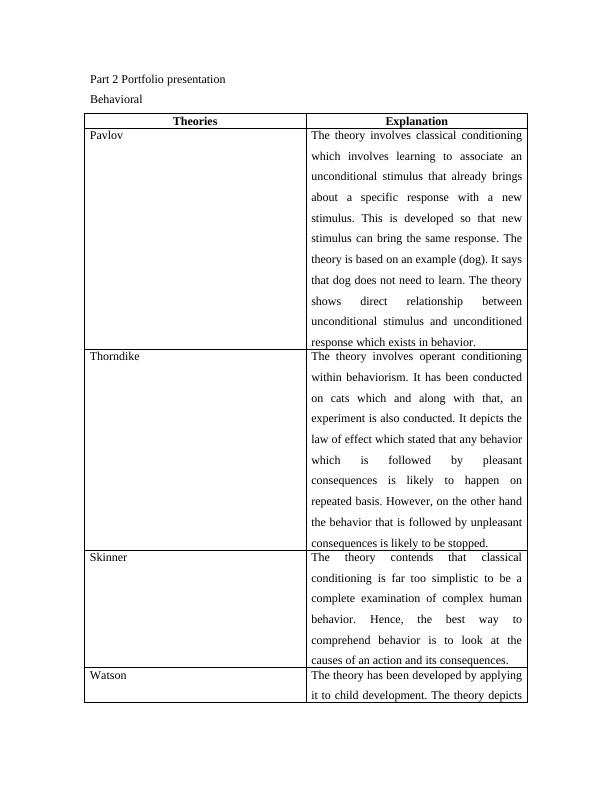Ask a question from expert
Behavioral Theories - Report
3 Pages652 Words199 Views
Added on 2020-01-07
Behavioral Theories - Report
Added on 2020-01-07
BookmarkShareRelated Documents
End of preview
Want to access all the pages? Upload your documents or become a member.
Psychology Assignment Presentation
|23
|1219
|296
Behaviour Development Through Classical Conditioning
|9
|1758
|22
Behavioral Perspective Assignment
|5
|657
|139
Introduction to Psychology: Learning, Classical Conditioning, Operant Conditioning, and Social Learning
|9
|1819
|188
The unconditional stimulus the dog’s
|4
|430
|24
Unconditional and Natural Response
|7
|1775
|186
